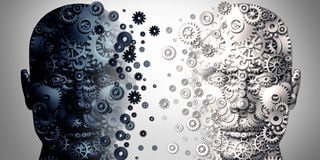Bipolar 1 Disorder: Symptoms, diagnosis, and treatment

Bipolar is characterised by episodes of elevated energy and activity, followed by periods of depression.
What you need to know:
- There are four types of bipolar disorder: Bipolar 1, Bipolar 2, bipolar-related disorders and cyclothymic disorder.
- The difference between Bipolars 1 and 2 is the severity of the manic and the depressive episodes.
- Treatment for bipolar includes mood-stabilising drugs and psychotherapy.
Bipolar 1 disorder is one of the four types of bipolar disorders. The others are bipolar 2 disorder, cyclothymic disorder, and bipolar-related disorders.
According to licensed psychologist Ken Munyua, bipolar-related disorders include disorders that have been induced by alcohol, stroke, multiple sclerosis, medications, and drugs; cyclothymic disorder is a mild mood disorder that has symptoms that are similar to bipolar 2. According to Mr Munyua this disorder is diagnosed if an individual has had at least two years of hypomania and depressive symptoms.
“Cyclothymia and bipolar disorder cause emotional ups and downs that swing from manic highs to depressive lows,” says Mr Munyua.
Of the four types of bipolar disorders, bipolar 1 and 2 are the most common.
Difference between bipolar 1 and 2 disorders
According to the International Bipolar Foundation (IBF), the difference between bipolar 1 and 2 is in the severity of the manic episodes that the patient experiences.
“Both disorders involve shifts in mood, energy, activity levels, and concentration. However, they have two main differences, which include the intensity of manic episodes and the prevalence of major depressive episodes,” the IBF says.
Unlike bipolar 1, bipolar 2 is manifested through a pattern of depressive episodes and hypomanic episodes. These episodes are usually less severe in comparison to the manic and depressive episodes that feature in bipolar 1.
Diagnosis
According to the United States biomedical research agency National Institute of Mental Health (NIMH), all types of bipolar disorder are typically diagnosed during late adolescence or in early adulthood.
A patient is diagnosed with bipolar 1 if they have had at least one manic episode. This episode may be preceded or followed by hypomanic or major depressive episodes. According to Mr Munyua, the patient might seem to be living in a reality of their own, which can be perceived as a form of psychosis. These maniac attacks can be so severe that the patient may require medical intervention.
According to the NIMH, these maniac episodes may last for up to seven days. However, with bipolar 1 disorder, the patient will not always have a major depressive episode. When they occur, though, the NIMH cites that they will typically last for at least two weeks.
“The patient may show episodes of depression with mixed features of both depressive symptoms and manic symptoms at the same time. They may also experience four or more episodes of mania or depression within a year, which is qualified as ‘rapid cycling,” the NIMH states.
Symptoms
According to the WHO, manic symptoms may include euphoria or irritability, and increased activity or energy. “The patient might also show other symptoms such as increased talkativeness, racing thoughts, increased self-esteem, decreased need for sleep, distractibility, and impulsive, reckless behaviour,” says the WHO.
For instance, the patient might have an excessive appetite for food, drinking, or sex. They might also feel unusually important, talented, or powerful.
Where the patient has a depressive mood swing, the WHO states that they might show symptoms such as an overwhelming feelings of sadness, irritability, emptiness, a loss of pleasure, or a loss of interest in activities they have previously been very fond of.
These symptoms will happen nearly throughout the day or almost every day. According to the WHO, the extreme mood swings that are characterised by bipolar mean that the patient is at an increased risk of death by suicide.
Treatment
Treatment for bipolar usually involves a combination of medications and psychotherapy.
Since bipolar is a lifelong mental condition, the patient will require a long-term treatment plan to keep extreme maniac and depressive episodes at bay.
According to the NIMH, mood stabilisers and atypical antipsychotics are some of the most commonly administered medications in the treatment of bipolar.
“Mood stabilisers such as lithium or valproate can help prevent mood episodes or reduce their severity,” the NIMH states. “Lithium also can decrease the risk of suicide. Medications that target sleep or anxiety are sometimes added to mood stabilisers as part of a treatment plan.”
Where the patient has bipolar depression, the NIMH recommends that antidepressants be administered together with mood stabilisers.
“Antidepressants alone can trigger manic episodes in the patient or multiple episodes of mania or depression within the following months,” the NIMH cautions. “If a patient has been put under medications, they should not stop taking their prescriptions without notifying and getting the green light from their doctor.”
Mr Munyua adds that it is important for the family to be involved in the patient’s psychotherapy, which will include behavioural therapy, social rhythm, and interpersonal therapy.



